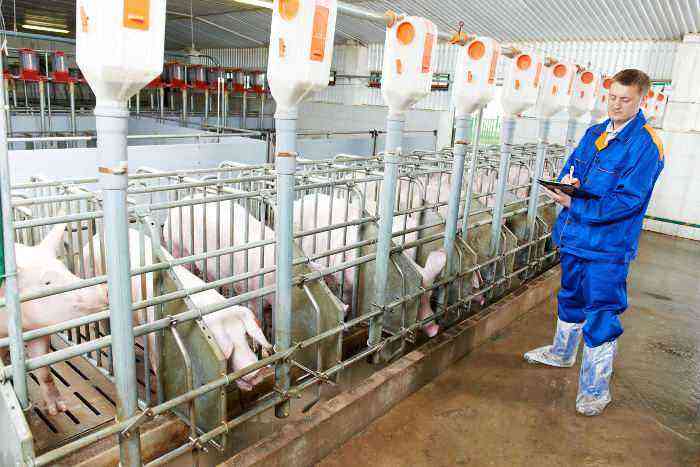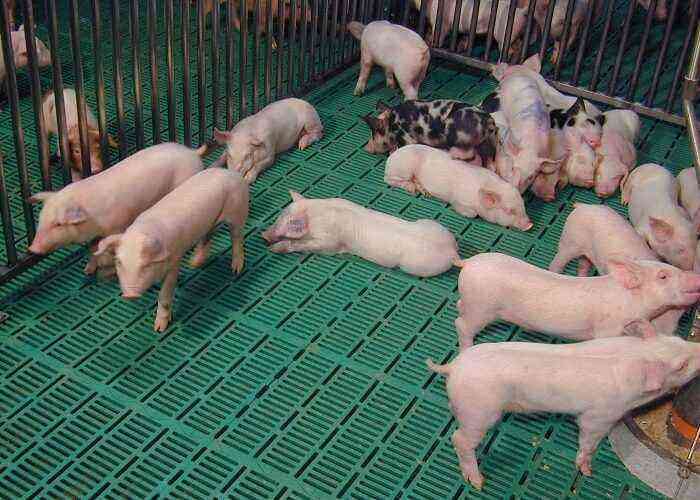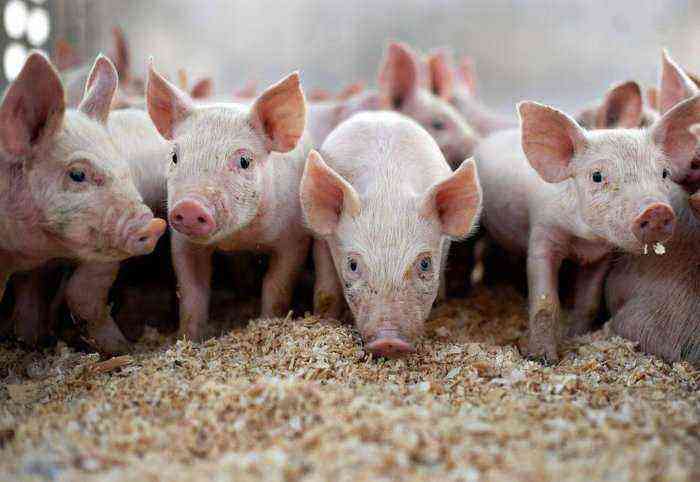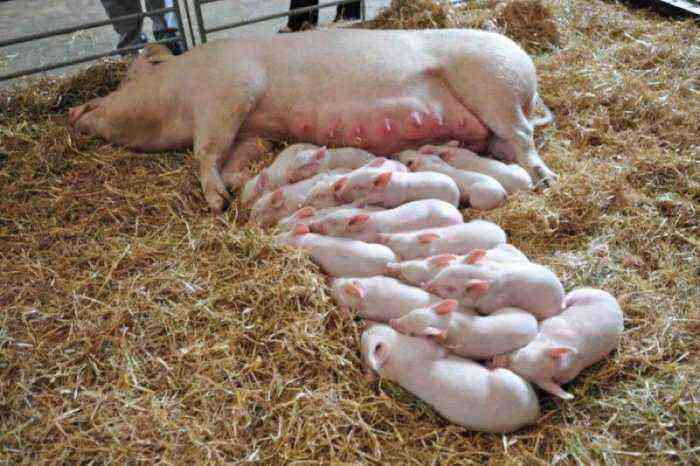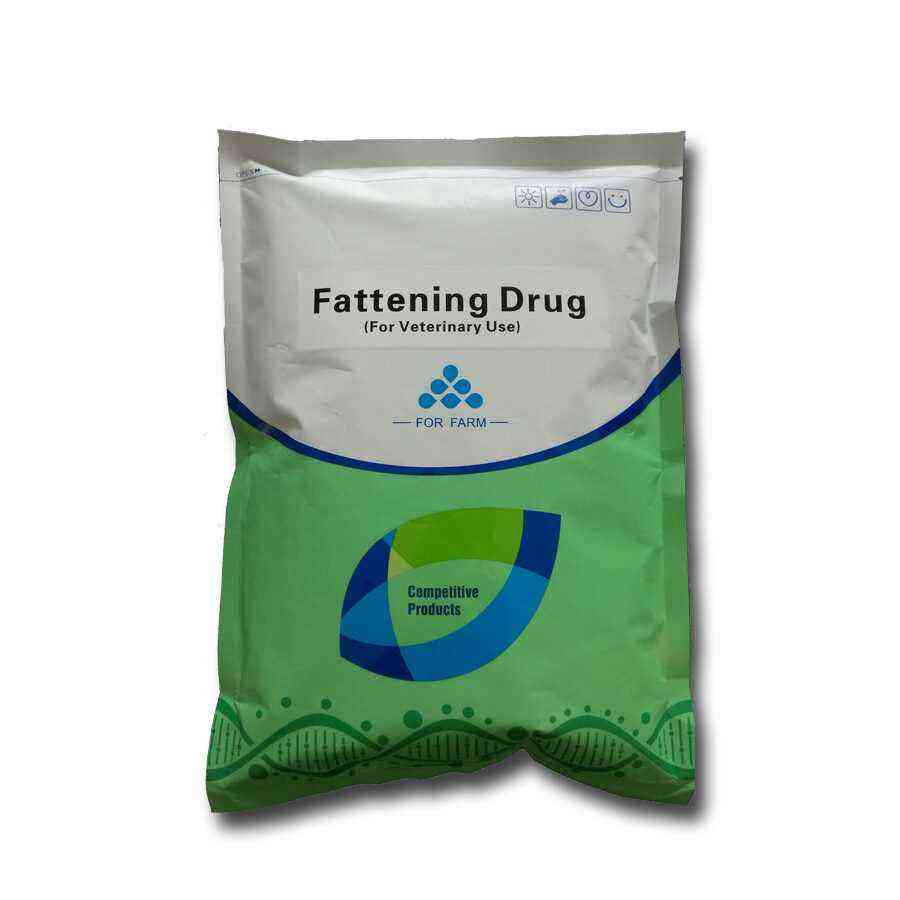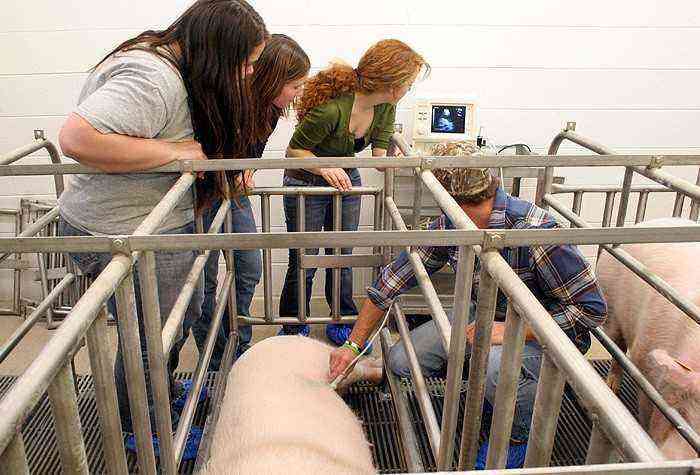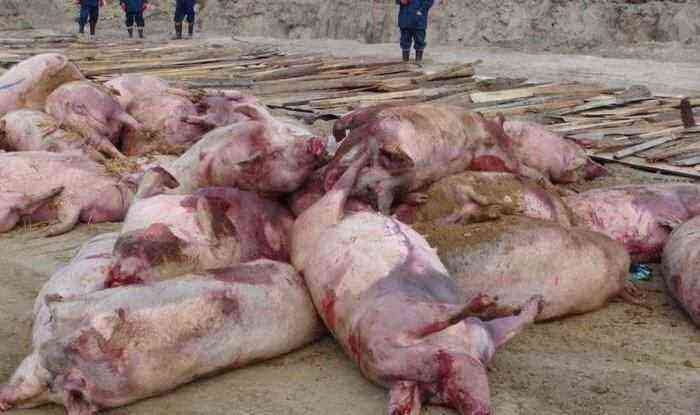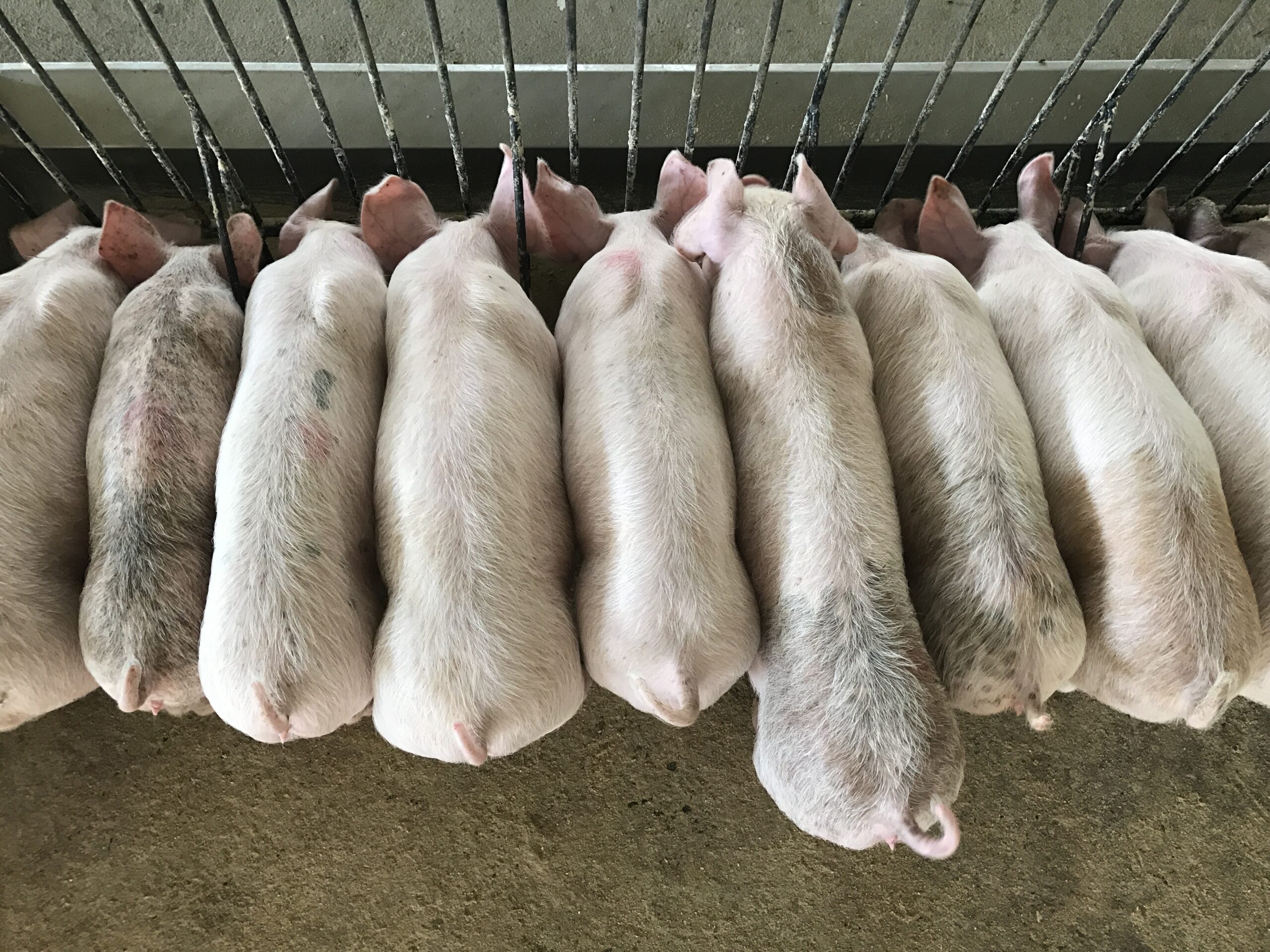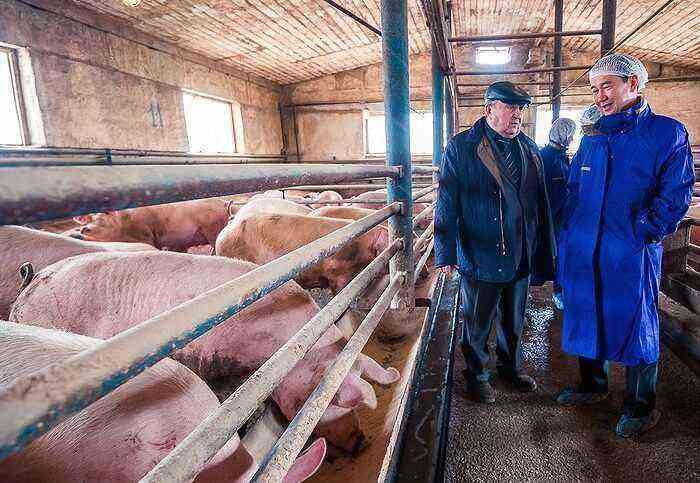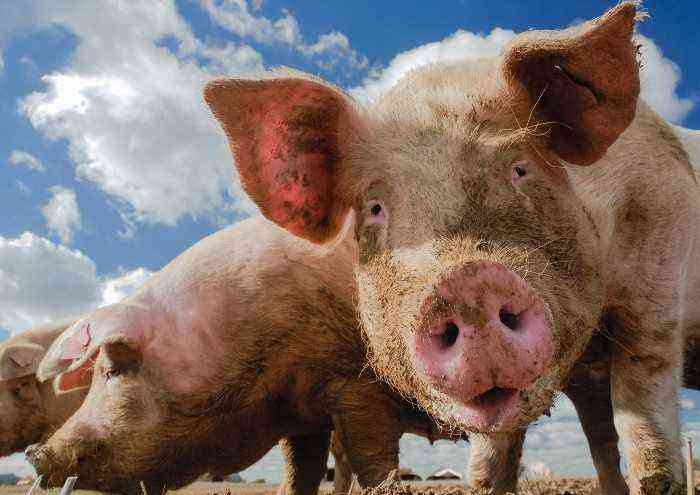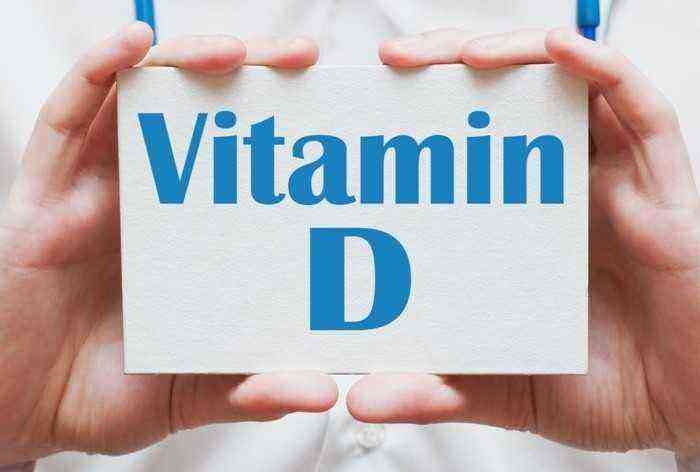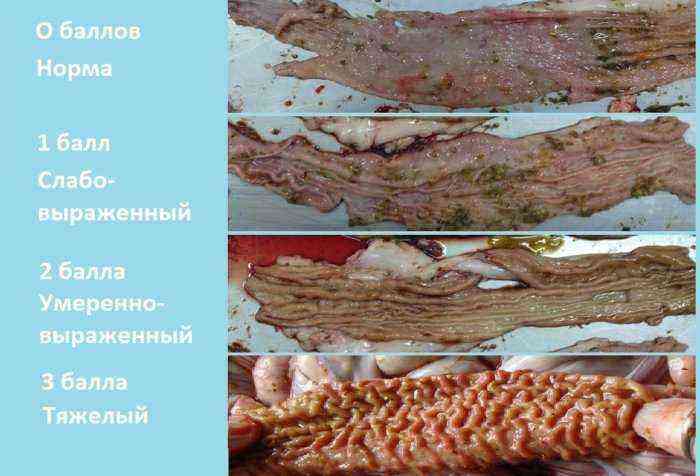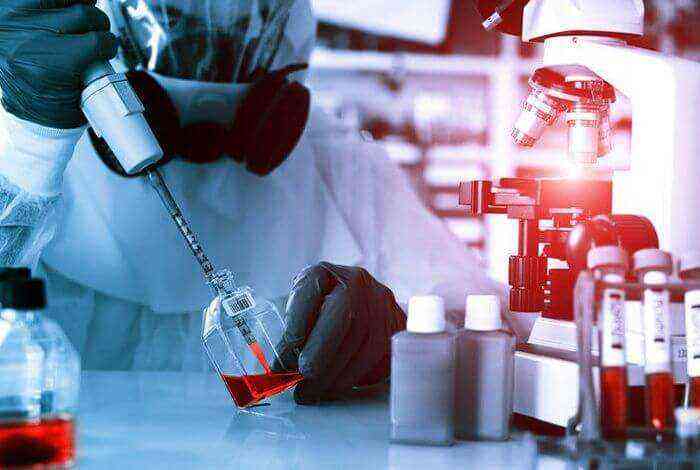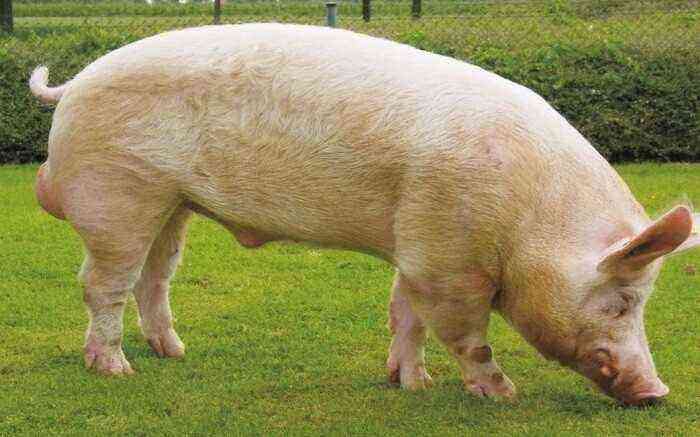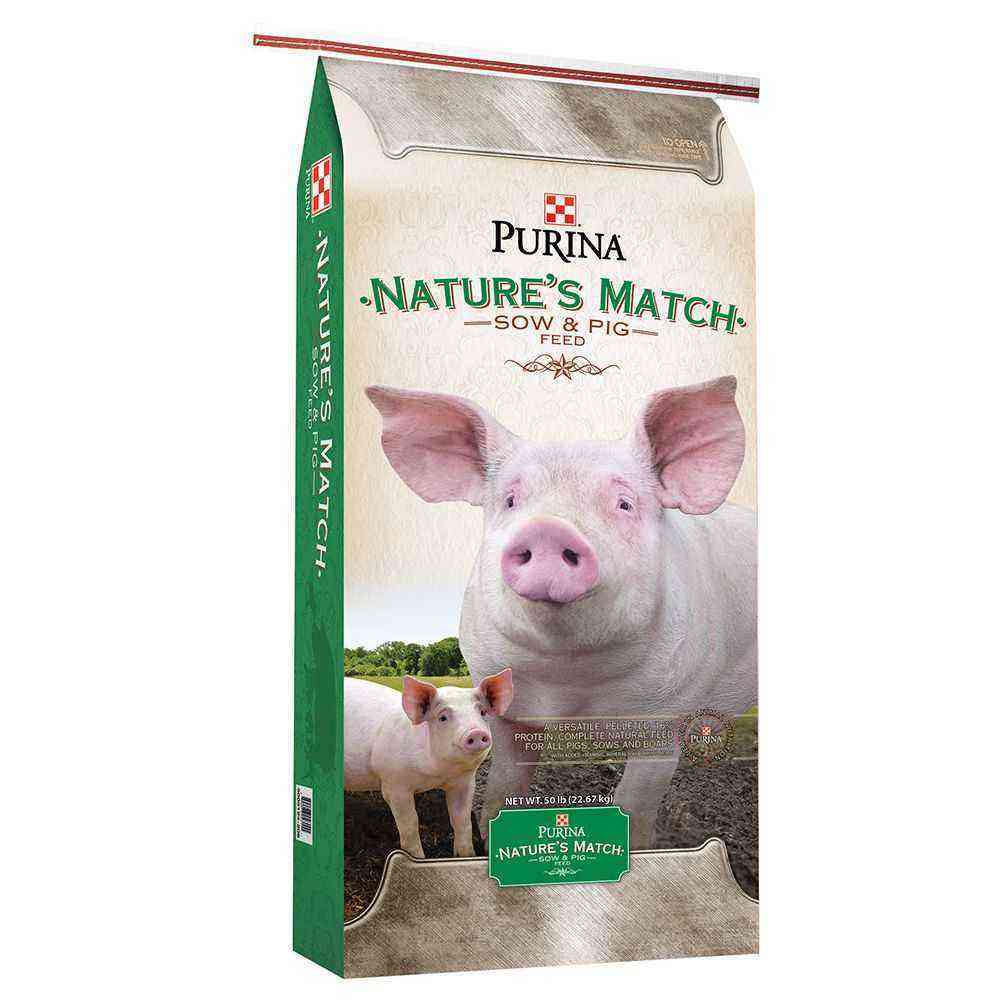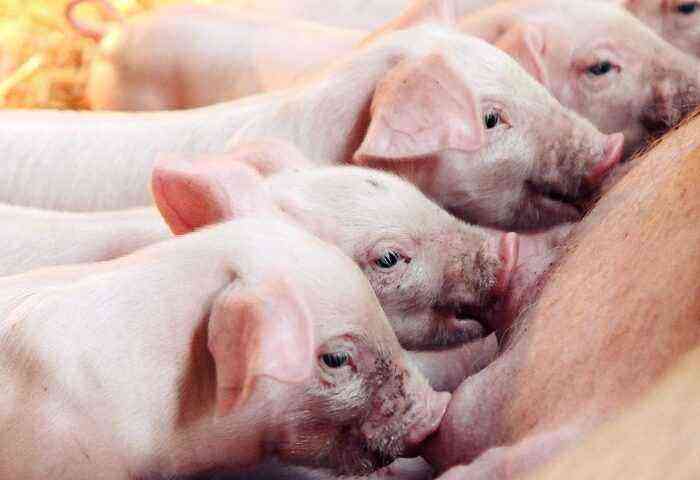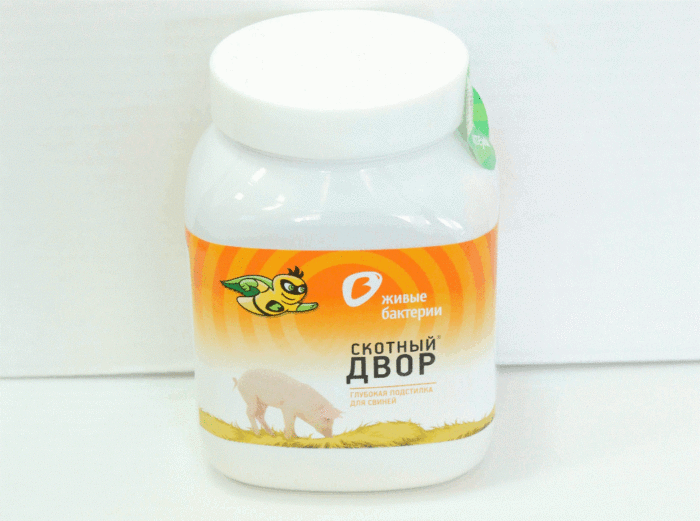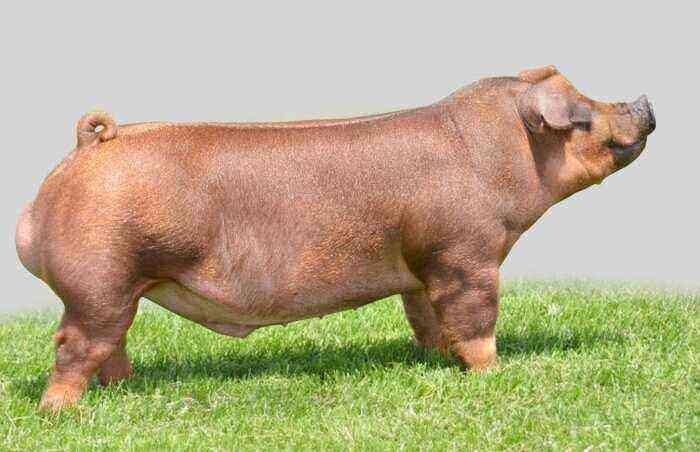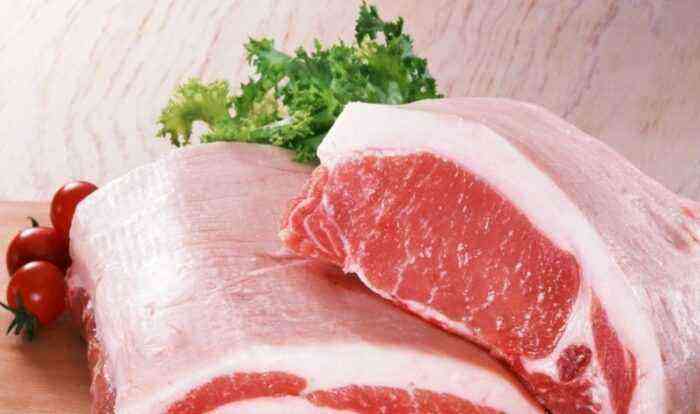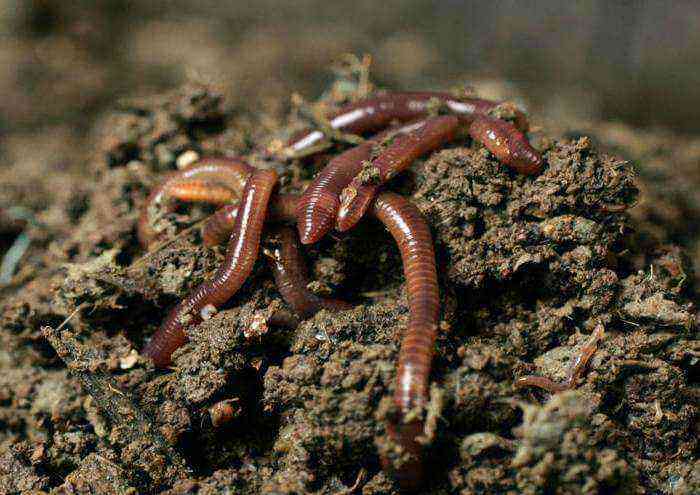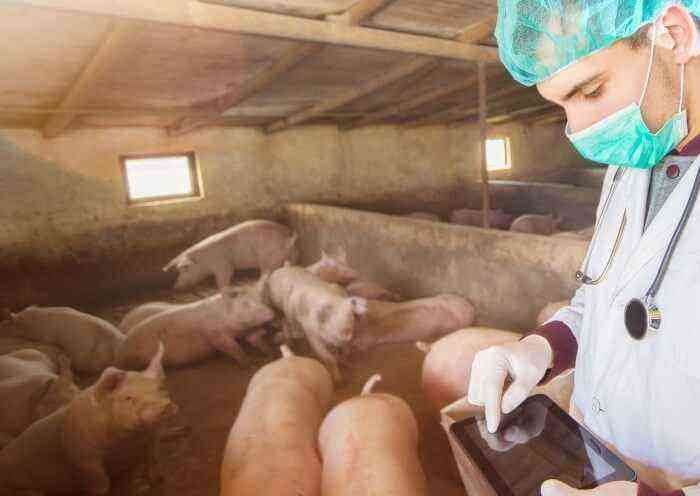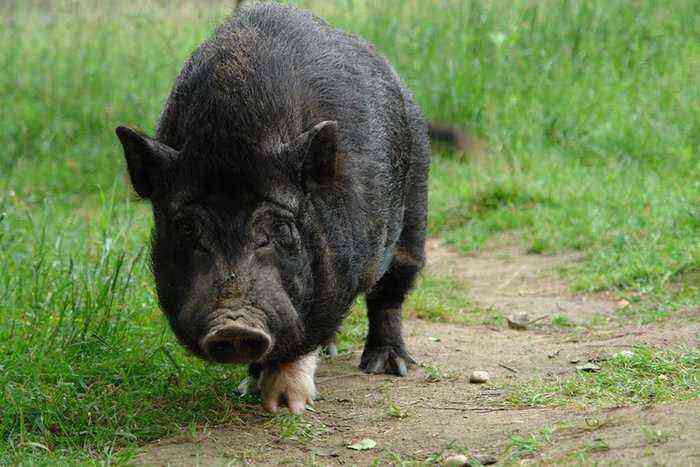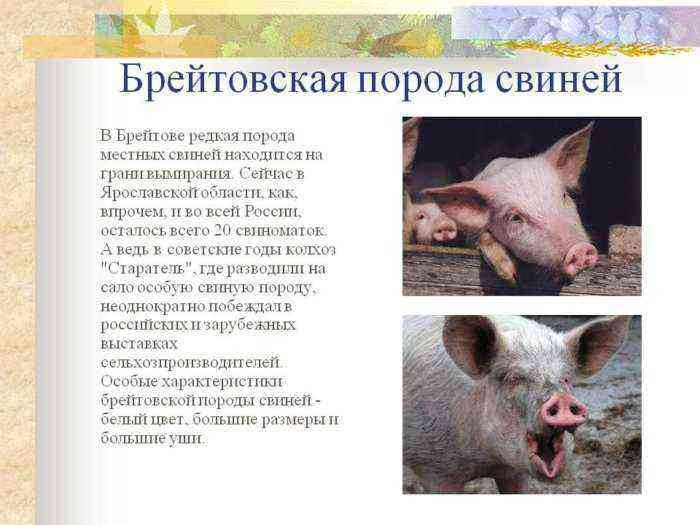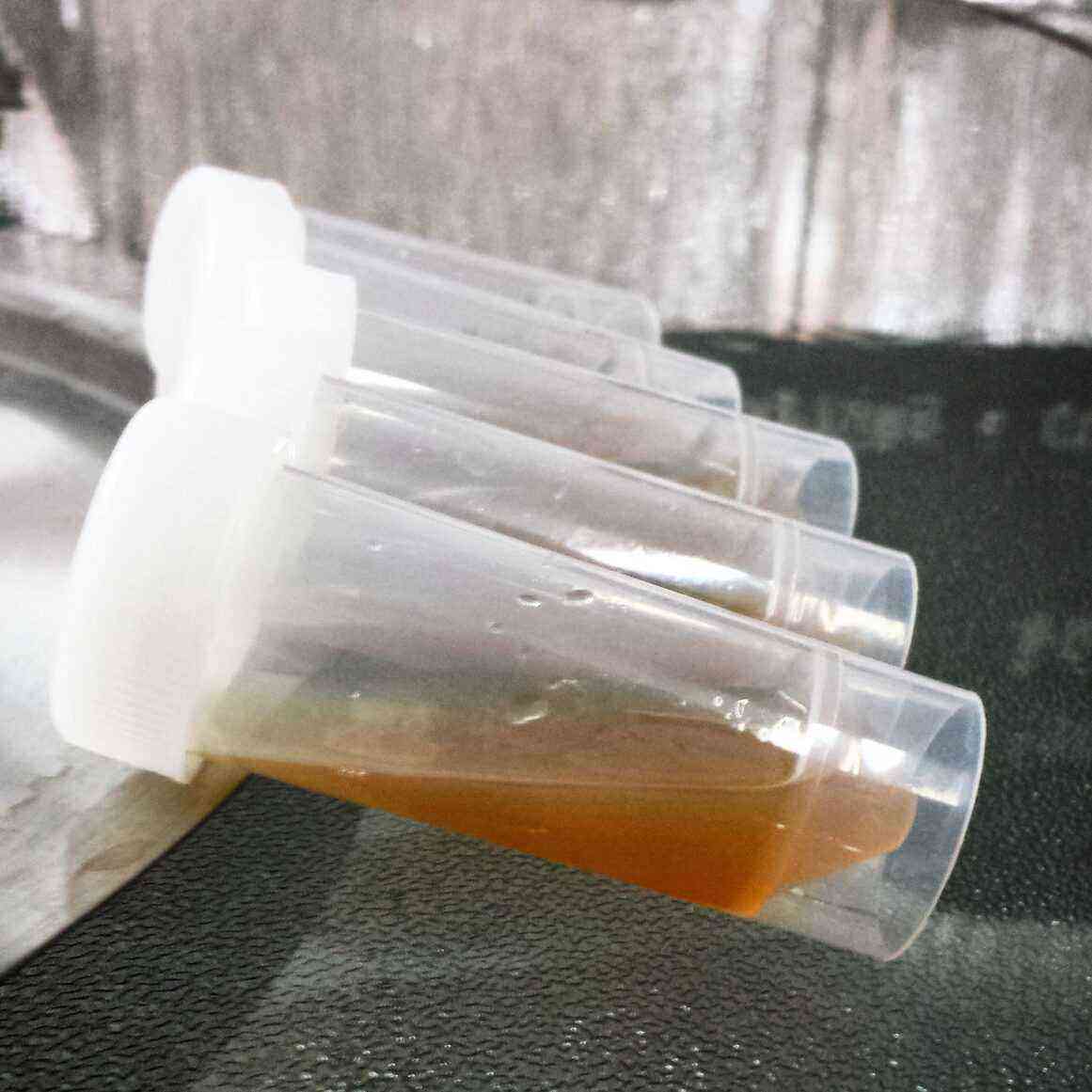One of the most dangerous diseases that cause the death of the pig population after only a few days of life is the edematous disease of piglets. The disease develops in just a few hours, and if time is lost, infected individuals die. There is a whole range of preventive and therapeutic measures to prevent and counteract this disease.
Edema pathology of pigs
Pathogens
As such, the causative agent of the disease is absent. Neglect of sanitary requirements can lead to the occurrence of the disease. Suckling piglets are at risk, especially if they receive the wrong diet. Non-compliance with the norms of vitamins and a small amount of calcium are the main causes of the disease. The immunity of young animals becomes weak in case of a lack of vitamin B.
The main mistake in feeding piglets is a large amount of dry food and insufficient drinking. As a result, the animal’s stomach is full, histamine is produced in excessive amounts, which actively interacts with bacteria. Which is what causes swelling.
Important! Intensive production of hemotoxins and exotoxins against the background of active division of Escherichia coli leads to a sharp deterioration in the condition of piglets and the rapid development of the disease.
Pathogenesis
The development of edema in piglets begins due to the rapid multiplication in the gastrointestinal tract of Escherichia hemolytic coli. In the intestine, toxins of feed and bacterial origin are intensively formed, as a result, acute intoxication of all organs and systems begins.
The next stage is the development of acute heart failure and vascular disorders. The amount of albumin in the blood drops sharply, water is retained much worse, which causes swelling of the tissues surrounding the bloodstream. Edema is observed both on the body of the piglet and on the internal organs.
The disease can cause swelling of the brain. A sick individual has convulsions, ataxia, paralysis, decreased sensitivity and other disorders of the central nervous system.
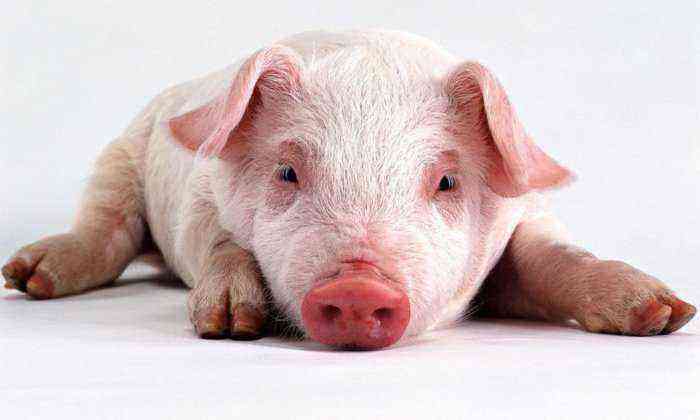
Pig paralysis
Evidence
The disease develops quite quickly. The incubation period is only 6-10 hours, it is characterized by the following symptoms:
- development of acute toxicosis;
- malfunctions of the central nervous system;
- gastroenteritis;
- swelling on the body, swelling of internal organs.
The disease is quite aggressive, occurs suddenly and has two forms: typical and atypical.
Signs of a typical course of the disease:
- A sharp jump in body temperature up to 41 degrees. After 6-8 hours, this indicator returns to normal.
- Frequent, recurring seizures. Piglets begin to avoid bright light sources, stand uncertainly on their feet. Fine trembling in the muscles, increased anxiety and excitability.
- Excitement is replaced by deep apathy. There are almost no reactions to external influences: touches, calls. Animals either lie on their side or sit like a dog.
- High hyperemia of the mucosa. There is swelling in the eyes, neck, forehead, nose and abdomen.
- Piglets practically do not eat, cough often and strongly. Tachycardia and loose stools develop.
In the absence of proper treatment at the initial stage of the disease, infected individuals die within 3-18 hours. Sometimes the disease can last up to 3 days. The grown up young growth is ill longer: 5-7 days.
The atypical form of edematous disease of pigs is much easier. Nervous disorders, like heart failure, are mild. There is diarrhea.
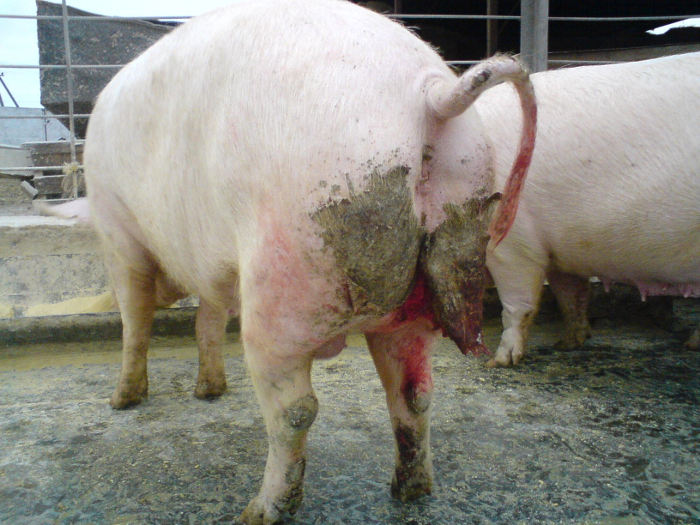
There is diarrhea
However, despite the mild form, the disease still remains deadly for piglets. They also need a thorough examination by a veterinarian and the appointment of appropriate medications.
Treatment
Only complex treatment of the disease can be effective. Eliminating the lack of vitamins and minerals in the body of animals will be ineffective without a full, regular diet.
Edema disease is extremely dangerous due to the high rate of development, the percentage of deaths is high. Therefore, treatment should be started immediately after the first signs of the disease were detected. At the same time, healthy animals must undergo a complex of preventive measures.
The first steps:
- a week before weaning from the sow, an examination of the entire population of suckers is carried out, sick individuals are separated for subsequent treatment;
- the first 8-12 hours, the piglets are kept hungry, drinking plenty of them with laxatives;
- magnesium sulfate helps to reduce intoxication, the dose of one dose for a piglet is usually 25-40 grams, depending on the live weight.
Effective healing solutions:
- 50-60 grams of Glauber’s salt per 10 liters of water. The solution is used to cleanse the intestines of toxic substances and is administered with an enema.
- 1% solution of diphenhydramine. Enter intramuscularly twice a day (morning and evening), 4 ml.
- 10% solution of calcium chloride. Administered twice a day.
- calcium gluconate, 20 ml and 10% novocaine solution, 10 ml. It is administered intramuscularly.
- Plentiful drink. Drinkers should always be filled with fresh, cool water.
Also during the treatment, antibiotics are actively used to help suppress Escherichia coli. The base of the combined form is sulfanilamide. If necessary, it can be replaced with a cephalosporin.

Medical events
Naturally, without the appointment of a veterinarian, the introduction of any drugs to animals is contraindicated. The action of drugs will be more effective in combination with a mixture of essential vitamins.
Attention! Aminazine or diphenhydramine will help relieve neurological seizures. A solution of urotropine (40%) will improve the outflow of urine, injections are usually prescribed 2 times a day.
Prevention
Scientists have not yet been able to discover the mechanisms of formation of immunity to this disease. Since the infection of most individuals leads to death, the importance of preventive measures cannot be overestimated. The risk of the disease can be reduced significantly if you strictly follow a number of practical tips:
- suckling piglets should eat regularly, strict observance of the regime is mandatory;
- it is necessary to choose the right proportions of wet and dry food;
- the diet should include vitamin, probiotic and mineral supplements;
- young animals should regularly receive milk with a high content of acidophilus;
- the transition to new, coarser feed should be carried out gradually.
Avoid sudden weaning of suckers from the sow, this can cause severe stress. In the case of the right approach, this process is carried out in stages and takes about 15 days. After that, the piglets are placed in cages, where they are subsequently grown. The diet for this period should not differ from that which they received in the first days of life.
If the disease is still manifested in a mild form, a special diet may be useful. For 8 days, young animals should receive only half the usual diet. You can also resort to one-day fasting, which is often extremely effective.
Disease prevention also includes:
- strict adherence to the temperature regime;
- keeping the feeders clean, they should not have leftovers;
- washing dishes used for food with boiling water;
- daily cleaning of pens from manure.
Be sure to carry out disinfection measures on a regular basis. Only in combination, all of the above actions will ensure a low incidence rate.
Conclusion
This disease can cause serious damage to both the household and the farm. Timely detection of edematous disease and its prompt treatment will prevent the death of young animals. Prevention of the disease, compliance with animal welfare standards, timely and proper feeding, abundant drinking and regular examinations will significantly reduce the incidence of disease among piglets.
